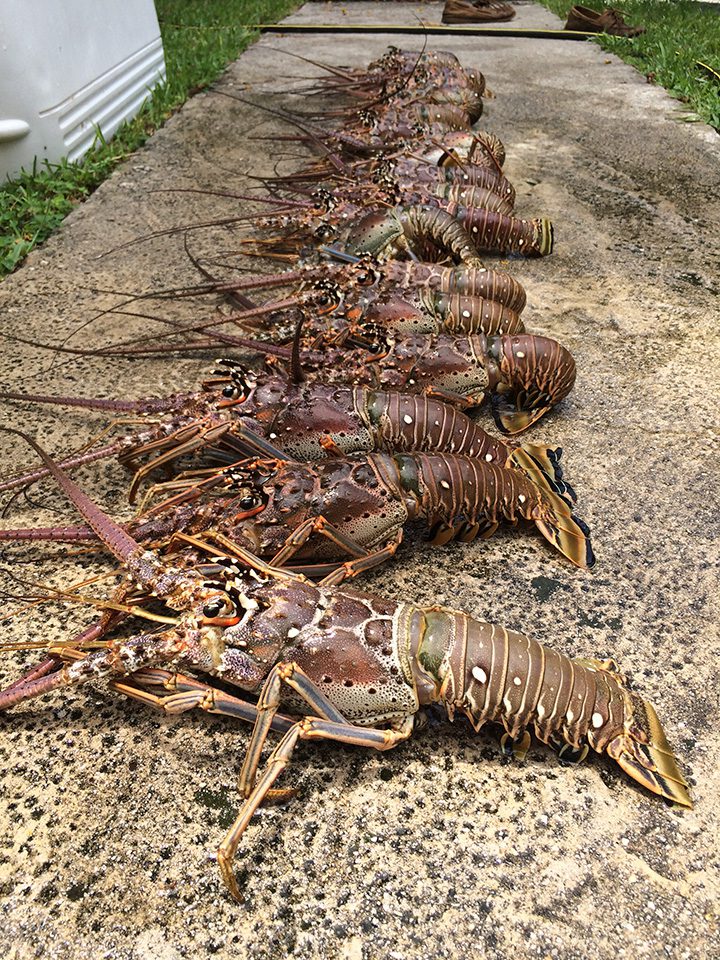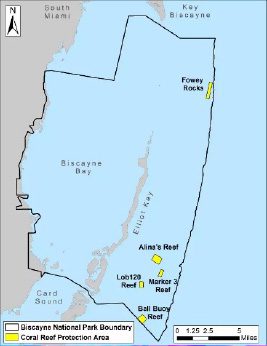
Lobster season is here at last. The Florida spiny lobster or the Caribbean spiny lobster is actually not a lobster at all but a crayfish. The season for taking these bugs is open for more than half the year and the sport season, or mini season, offers a great shot for recreational adventurers to grab a limit before the pros begin pulling millions of pounds of this valuable seafood out of the water. Once the regular season starts it gets harder and harder to find them.
The most common approaches are tickle stick and net or snare. I recommend a tickle stick and net for when you find them stacked up. If you are picking singles out of holes I will use a snare. I normally go down with both. When looking for area to dive, I like working coral heads in 10 to 35 feet of water, with proximity to grass. Look for broken apart shells around holes and coral heads, normally a good indicator of lobsters in the area. If you see the bottom littered with antenna and broken legs it’s a good indication that you’ve been out foxed and someone has already hit your favorite spot.
The most important thing to remember about mini season is safety first. No lobster is worth someone getting hurt. Mini season has become a big event In Miami and many of the, shall we say, less experienced adventure seekers are out in addition to every boat owner and his brother. The prime habitats, waterways, points of entry and egress can get crowded, and crowded is dangerous. Especially when you have people in the water.
Watch other boaters and divers and be aware of your surroundings at all times. I recommend buying an oversized dive flag and rigging it to a pvc pole. Make sure it flies higher than your T-top. Your dive flag is to be mounted at the highest point on the boat and must be clearly visible. I also recommend always having a boat driver to stay with your divers for safety and to box out any oncoming boats not paying attention.
Now for a quick review of some of the general regulations. Always check the official regulations before your trip. All harvesters must have a valid Florida fishing license with a lobster endorsement and here are some key rules to follow! Check your park limits if you are on the line!!
Mini Season: July 27-28, 2022 (last consecutive Wednesday and Thursday of July each year)
Daily Bag Limit: 6 per person for Monroe County and Biscayne National Park; 12 per person for rest of Florida. Possession limit on the water is equal to the daily bag limit.
Possession limit off the water: equal to the daily bag limit on the first day and double the daily bag limit on the second day. Possession limits are enforced on and off the water.
Minimum Size Limit: Carapace must be larger than 3″, measured in the water. Possession and use of a measuring device required at all times. Find out how to measure a spiny lobster.
Night Diving: Prohibited in Monroe County (ONLY during sport season) Diving is defined as swimming at or below the surface of the water.
Harvest of lobster is prohibited in John Pennekamp Coral Reef State Park during the sport season and in Everglades National Park, Dry Tortugas National Park, no-take areas in the Florida Keys National Marine Sanctuary, in the Biscayne Bay/Card Sound Lobster Sanctuary, and in the five Coral Reef Protection Areas in Biscayne National Park during both the 2-day sport season and regular season.
Coral Reef Protection Areas in Biscayne National Park
Fowey Rocks Lighthouse CRPA
Point 1: 25° 35.616′ N; 80° 5.822′ W
Point 2: 25° 35.567′ N, 80° 5.592′ W
Point 3: 25° 34.423′ N, 80° 5.862′ W
Point 4: 25° 34.468′ N, 80° 6.093′ W
Alina’s Reef CRPA
Point 1: 25° 23.601′ N, 80° 10.125′ W
Point 2: 25° 23.284′ N, 80° 9.563′ W
Point 3: 25° 22.877′ N, 80° 9.841′ W
Point 4: 25° 23.194′ N, 80° 10.402′ W
Marker 3 Reef CRPA
Point 1: 25° 22.534′ N, 80° 9.679′ W
Point 2: 25° 22.445′ N, 80° 9.443′ W
Point 3: 25° 21.965′ N, 80° 9.663′ W
Point 4: 25° 22.055′ N, 80° 9.900′ W
Lob120 Reef CRPA
Point 1: 25° 21.687′ N, 80° 11.311′ W
Point 2: 25° 21.671′ N, 80° 11.023′ W
Point 3: 25° 21.257′ N, 80° 11.048′ W
Point 4: 25° 21.270′ N, 80° 11.338′ W
Ball Bouy CRPA
Point 1: 25° 19.379′ N, 80° 11.110′ W
Point 2: 25° 19.044′ N, 80° 10.775′ W
Point 3: 25° 18.732′ N, 80° 11.155′ W
Point 4: 25° 19.067′ N, 80° 11.489′ W
Now go out and enjoy the day. Follow the rules and be safe, watch out for other boaters!
